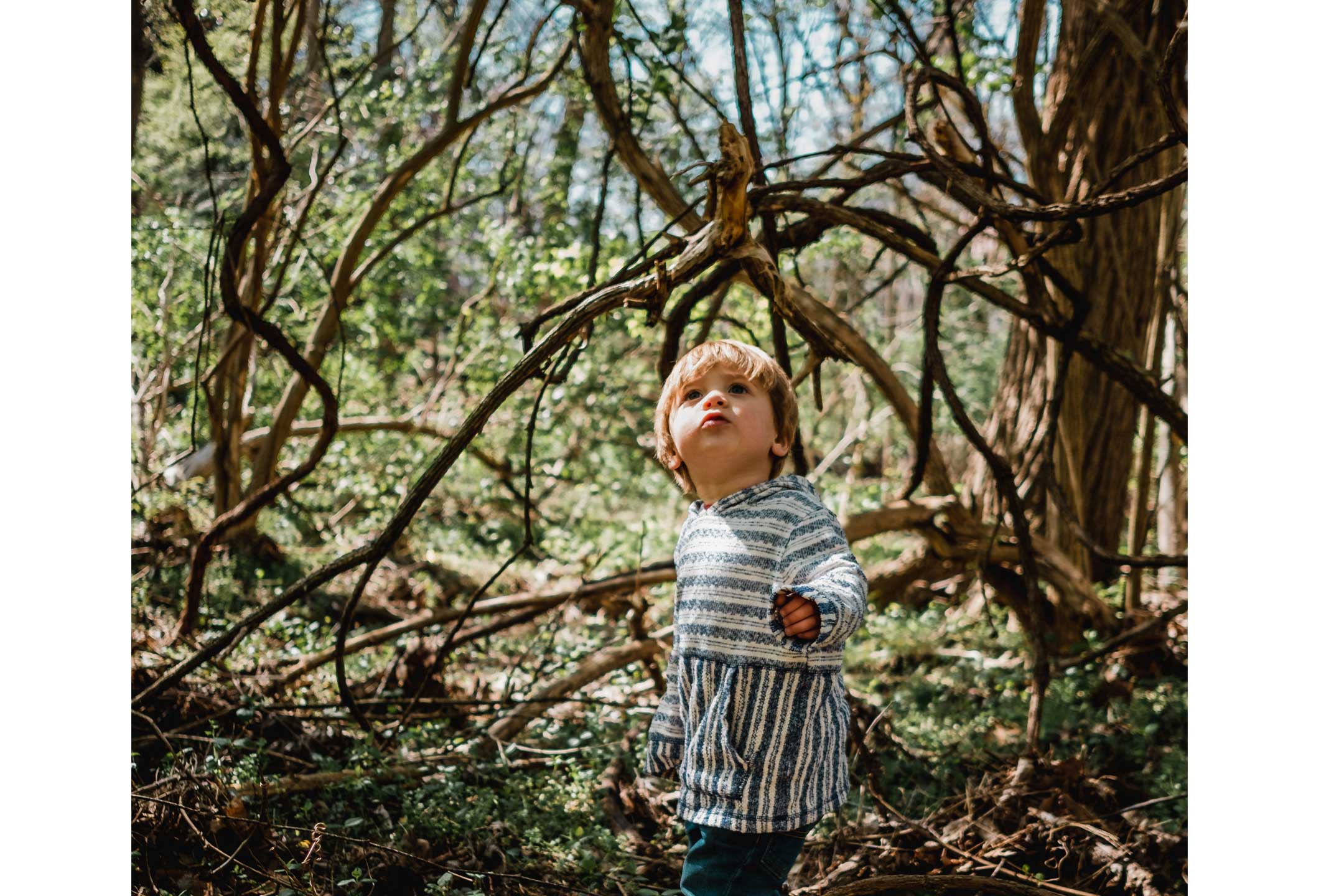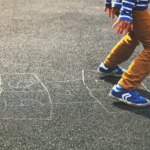
05 Feb Go outside and play!
Early childhood professionals are doing what they can to offer elements of the natural environment and plenty of free play in playgrounds, writes Angela Rossmanith.
Take yourself back to early childhood and notice how and where you best loved to play. Chances are that you most enjoyed being outside, free to run and roam, or to dawdle and dream. Do you remember the trees you climbed or hid under? The creek that carried away the sticks you threw into it? The park with its vast open spaces for running and skipping and rolling until mum said it was time to go home?
Playing inside has its own pleasures, but the outdoors, especially in nature, provides a rich sensory environment for little children. Early childhood professionals are well aware of this and do what they can to offer elements of the natural environment and plenty of free play in the playgrounds of early childhood settings.
“Our philosophy? It’s ‘play, play, play’,” said Roy Lilley, of Durrumbul Community Preschool, near Mullumbimby in northern NSW. “Children learn through play. I like them to be outside using their bodies, running and jumping and riding around. When little kids spend time doing that, everything else follows.” The centre has plenty of open space, with expansive trees supplying shade in summer, a large sandpit and lots of room for children to run and ride their bikes. There’s a veggie and herb garden where the kids plant beans and peas and other seasonal produce, as well as what Lilley calls “browse trees” – papaw, guava, citrus, mango – for the children to pick and eat whenever they want.
Not all centres for young children are so lucky. Many of the children at Moore Park Gardens Preschool and Long Day Care Centre, in Sydney’s inner city, have no backyards at home, so the trees and sandpit in the outdoors area may be the only experience they have of a natural environment. The centre is situated in a building complex, and director Alice Voigt says that the children love their excursions to a nearby reserve. “What we’d love most for the kids is more space,” she says.
It’s space that is most important in a playground, says Prue Walsh, an early childhood educator who specialises in children’s physical environments. Based in Queensland, Walsh travels nationally and internationally to speak on the necessary design elements of children’s playgrounds. When it comes to access to playgrounds with plenty of space, it’s inner-city kids who are most disadvantaged, she says. They also miss out on all the richness of the natural environment. “The outdoor physical environment needs to be sensory rich to arouse children’s interest,” she says. “When they’re interested, they explore, and that’s how they come to understand the world. This process is vital. People think playing outside is just for physical development, but it’s also important for social and cognitive development.”
In a paper for Eingana, the Journal of the Victorian Association for Environmental Education, entitled The importance of green play spaces for children – aesthetic, athletic and academic, Dr Kathleen Bagot of Monash University, reviewed research findings regarding natural play settings for children. A consistent result was that the more vegetation in a play area, the more children played. In one study, young children who spent time each day playing in a neighbouring forest showed significantly greater improvements in aspects of physical fitness than children who spent time in a standard playground. The researcher pointed to the greater range of play opportunities available to the children in the forest environment. For example, in the forest, children built huts by dragging branches and arranging them, and this would increase their strength.
Bagot also reports that when types of play were examined in different environments, the ‘greener’ the space, the more children engaged in creative play, such as pretend play. She points out that this kind of creative play has been associated with stronger cognitive abilities such as problem solving.
Whatever the kind of play, children are more likely to engage in play and to play for longer periods when they are outside in a setting that is inviting to them. That means lots of enjoyable exercise and, given the concern about the rising rate of obesity in children, this is particularly significant. If children are motivated and encouraged to move their bodies freely in early childhood, they are more likely to remain physically active as they grow older.
These days more children attend daycare than ever before and most children attend kindergarten before the age of five or six. Childhood professionals have raised concern about the early institutionalisation of children, with many spending out-of-school hours in extra lessons. Add to that the hours of transport, since kids tend to be driven to school and other activities, and the result is little time to explore and play outside. What’s important, then, is to provide playgrounds that provide plenty of opportunities for exploration and play.
Walsh says that those starting up early childhood centres need to realise that the licensing requirements are an absolute minimum, and that an effective playground design needs far more. “They turn to fixed-equipment companies for advice about the design of the outdoor area, and then you see the same old bright plastic stuff and rubberised surfaces. It may be well intentioned, but it isn’t meeting children’s needs. People setting up new centres need the expertise of early childhood professionals.”
Of course, safety is a central issue when it comes to playground design, but a too-safe playground can be a boring playground. Children love challenges. In fact, they need challenges to develop in a healthy way. It’s in the playground, under the supervision of adults, that young children learn to take calculated risks. When adults attempt to remove any chance of a fall, bump or scrape, they also remove all the most exciting elements of a child’s play environment.
As well as providing plenty of space with safe yet exciting, inviting and challenging features, a children’s playground needs to offer private places for retreat. “It’s important to have nooks and crannies – private areas, so kids don’t feel constantly watched, although of course they are still supervised,” says Alice Voigt.
The key to providing inviting playgrounds for children is excellent planning, says Prue Walsh. What children need is a layering of experience from the very beginning; playgrounds need to cater for different children at different stages.
“The most successful and exciting playgrounds result from collaborative planning efforts using play knowledge, architectural skills, landscape architects and artists,” says Walsh, and offers as an example of great playground design, Colmslie Beach Reserve playground in Brisbane.
What might an exciting playground provide? Natural materials, such as timber, sand, pebbles and water; shrubs and trees of different shapes and sizes; a range of unusual kinaesthetic experiences, such as climbing ladders to a tree play house, or a swinging bridge; musical features, such as metal panels set into a pathway that each sound a different note; opportunities for children to create, dig and investigate. Whatever appeals to a child’s natural curiosity and sparks their imagination is bound to be a hit.






